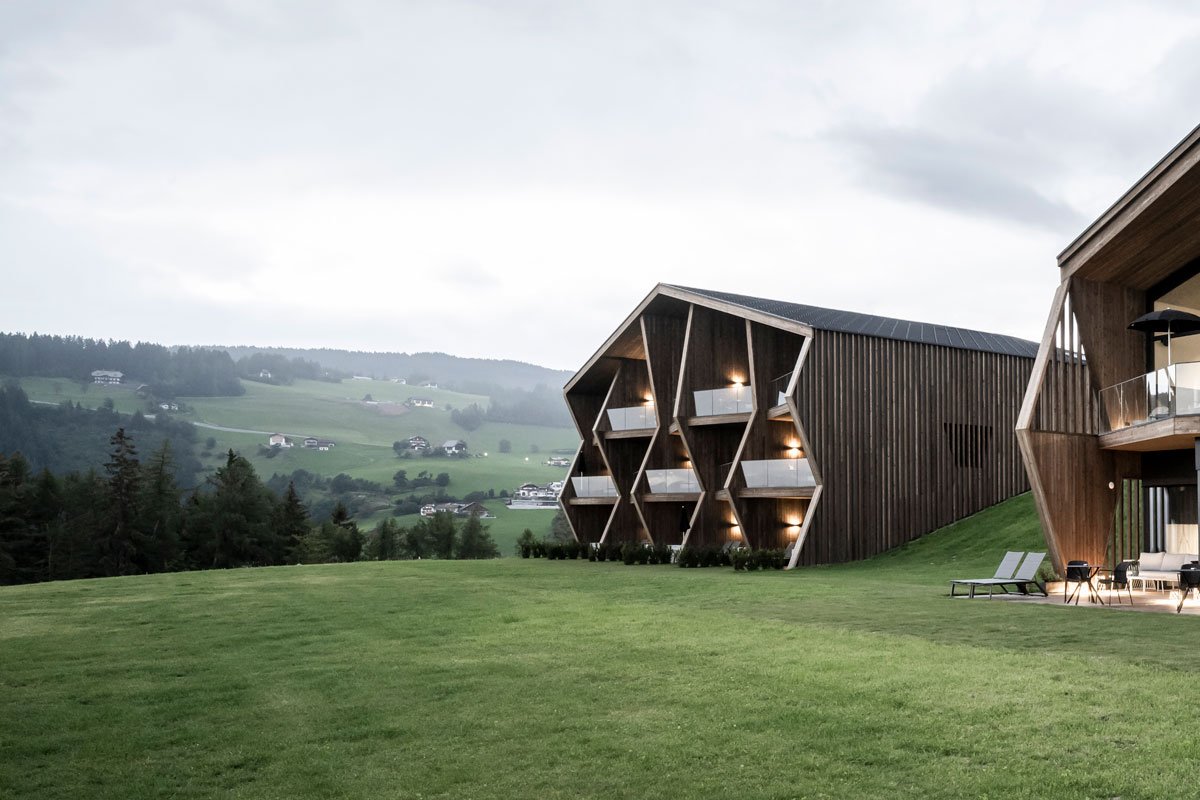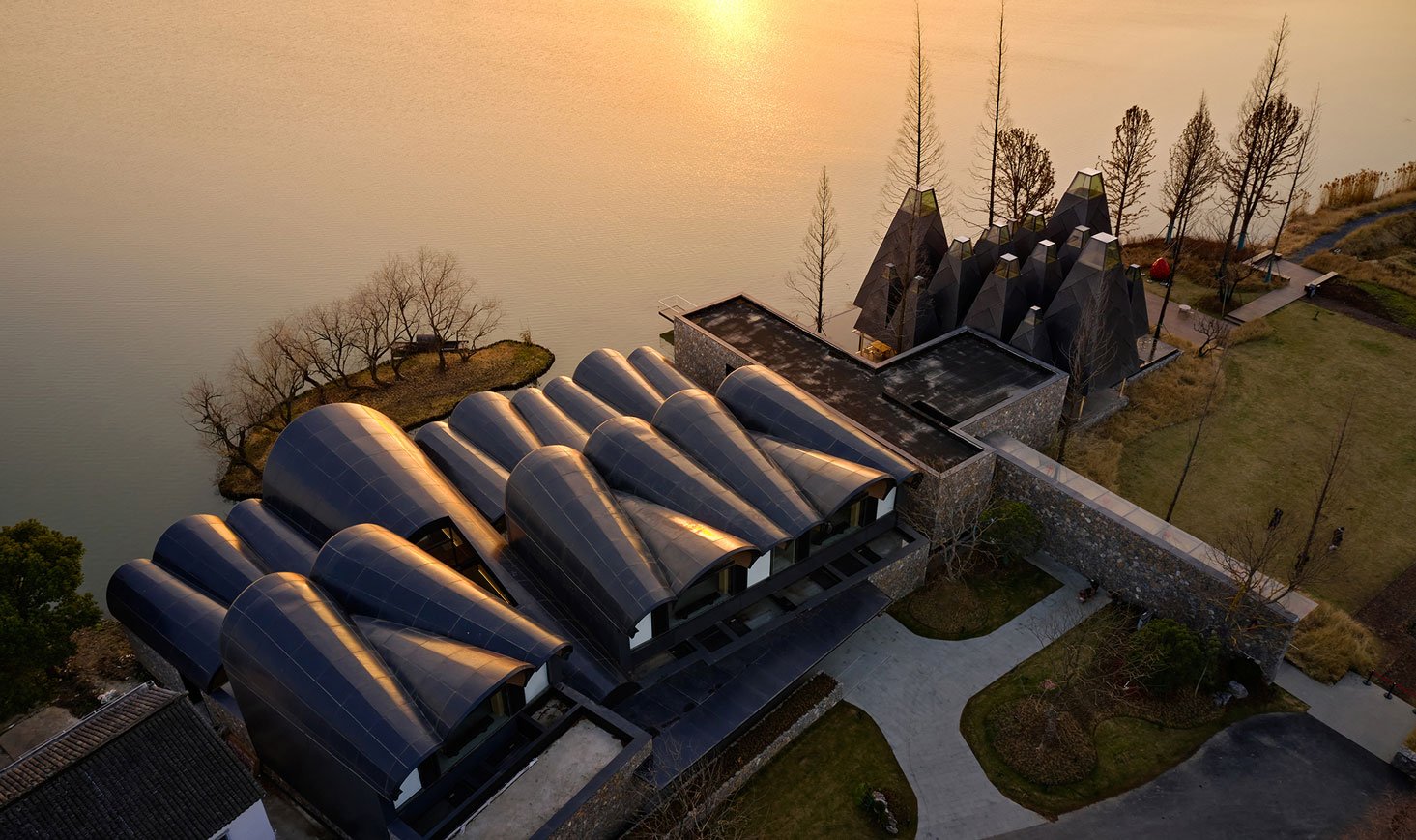HOTEL WUXI MGALLERY COLLECTION || Echoes of Jiangnan in an Immersive Architectural Journey

Designed by WATG and Wimberly Interiors, this new boutique hotel sits serenely within Dangkou Ancient Town, where arched stone bridges, tranquil canals, and centuries-old courtyards shape daily rhythms.
Its architecture and interiors immerse guests in Jiangnan’s poetic landscapes, reflecting the slow, meditative cadence of water and time.
Stepping into the hotel feels like entering a contemporary interpretation of a scholar’s retreat. The main lobby, with its soaring ceilings and dramatic blue feature wall etched with golden illuminated veins, evokes the grandeur of calligraphy scrolls and the intimacy of a library. This space is more than a reception—it’s an homage to Hua Tai Shi, the revered scholar whose preserved residence anchors the town’s cultural memory.
The dramatic lobby reinterprets a scholar’s library with a striking illuminated feature wall.
Throughout, design elements honour Jiangnan’s traditional north-south orientations and enclosed courtyards, where layered rooflines and low-rise structures blend seamlessly into the existing townscape. Villas and garden guestrooms echo the heights and proportions of neighbouring historic homes, creating a unified architectural language that respects local scale while introducing modern refinement.
Water is the defining element that threads the property together. An ancient canal network extends into the site, inviting guests to wander across arched bridges and pause by mirrored waterscapes. Inside, a circular water feature crowned by a skylight forms a contemplative pavilion where sunlight dances on cascading streams, evoking both ritual and tranquillity.
A circular pavilion waterfall becomes a contemplative centrepiece.
Courtyard arrival framed by sculptural trees and reflective pools.
Wimberly Interiors carries this sensorial richness into each interior space. The Tree Canopy restaurant feels like an indoor garden, with woven green pendant lights hovering like abstract foliage. Here, guests not only dine but participate in cooking classes led by local chefs, reinforcing the hotel’s vision as a community-connected destination. The Teahouse overlooks a preserved Huang Shi Nong water feature, creating a meditative retreat for tea rituals or quiet contemplation.
The Tree Canopy Restaurant boasts an airy high ceiling with a view of the courtyard.
Guestrooms continue the narrative with ink-wash mountain murals, carved timber wardrobes, and sliding screens framing garden views. Each room becomes a private pavilion, inviting guests to slow down and engage deeply with their surroundings. Minimal yet warm, the interiors strike a balance between contemporary comfort and subtle references to Jiangnan’s literary and architectural traditions.
Guestrooms balance minimalism and warmth with poetic ink-wash murals.
Beyond aesthetics, the hotel embodies a design philosophy rooted in cultural continuity and heritage. Its spaces are crafted to evoke not only visual beauty but also the atmospheric qualities that define place—still water, filtered light, textured wood, and stone pathways. As Raghavendra Shanbhag, Creative Director of Architecture at WATG, notes, “We took great care to honour historical heritage and tradition, weaving in community-centred elements with public access spaces to create an experience that extends beyond conventional hospitality.”
Dangkou’s canal network extends into the hotel, linking guests to local life.
Indeed, Hotel Wuxi MGallery Collection feels less like a hotel and more like an immersive journey through Jiangnan’s layered history. It reinterprets heritage for the modern traveller, offering not only comfort and luxury but also a reflective passage through time, rhythm, and culture.
Photography by Seth Powers. Courtesy WATG and Wimberly Interiors.







